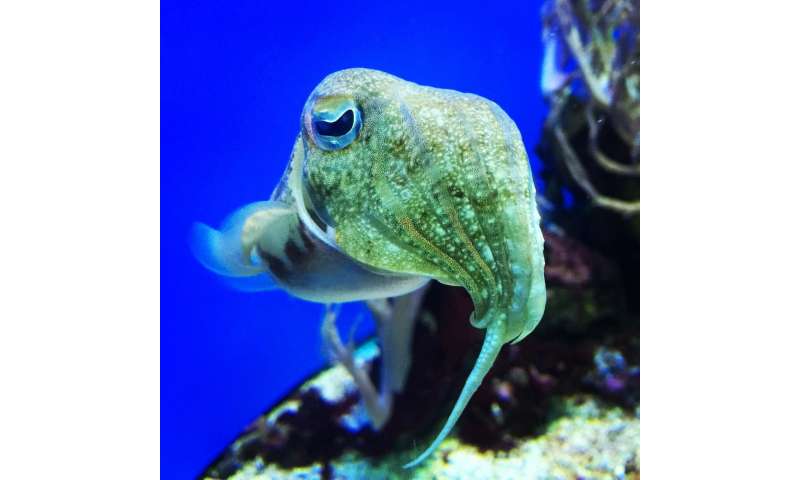Proteins from camouflaging underwater creatures provide key to seeing through cells

A team of investigators led by Salk Professor Inder Verma has received a $1.2 million grant from the W. M. Keck Foundation to generate transparent tissues in mammals using optically unique proteins called reflectins. This work will allow researchers to make better observations and extend the capabilities of live microscopy, such as observing the brain activity of mice while they are awake.
To design these tissue techniques, the Verma lab will build upon their work harnessing the optical properties of reflectin proteins, which are found in the skin and eyes of cephalopods (octopus, squid and cuttlefish) and are central to those animals' unique camouflage and visual communication abilities.
"Recently there has been a renaissance in light microscopy driven by novel fluorescent reporter molecules and improved optical techniques," says Verma, who is the American Cancer Society Professor of Molecular Biology at Salk. "But mammalian tissues continue to be challenging to image, due to light scattering induced opacity among other issues. Taking inspiration from nature, our project aims to change that."
Mammalian tissues are dominated by the watery areas inside cells (cytoplasm) and fatty membranes that enclose cells and form their internal compartments. Because light travels at different speed in each of these materials (a measure scientists call the refractive index) they bend or scatter light, which can lead to image distortions or opacity. The key to avoiding opacity within biological materials with different refractive indexes is to reduce that difference.
"Think of a cloud," says Gerald Pao, a Salk staff scientist who, along with Verma, will be leading the research effort. "In the air, fog is opaque, but fill the space between the suspended water droplets in the air with water and it becomes transparent. That's because there is no difference in refractive index."
The Salk team wants to infuse cells' cytoplasm and any spaces between membranes with reflectin evenly, where the proteins will serve as a bridge between cellular components with different refractive indexes, making the tissues more transparent.
Using genetic and molecular tools, the group has been able to express three different reflectin proteins in mammalian cells in culture, effectively manipulating the refractive index in living organisms. This nontoxic method is different from other tissue transparency techniques, which are often deadly to cells, but has yet to achieve complete tissue transparency. One way to achieve complete transparency may depend on identifying other versions of reflectin from different species.
The Keck grant will enable the Salk team to develop these methods and eventually make their use in live mammals possible.
Adds Verma, who holds the Irwin and Joan Jacobs Chair in Exemplary Life Science, "Imagine how much more easily we will be able to spot cancer or other kinds of damage if cells are less of a black box and more of a transparent one."
Provided by Salk Institute